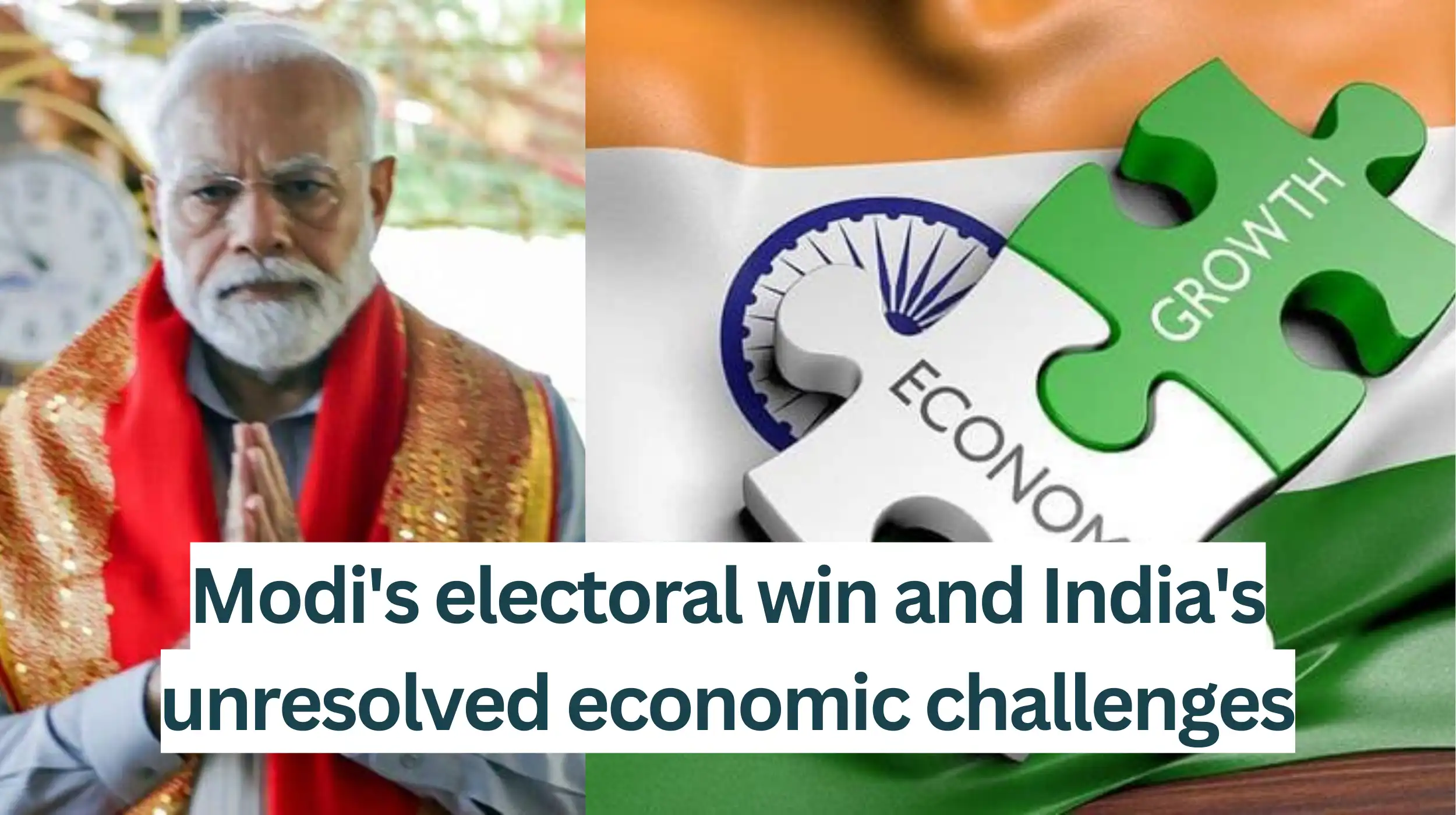New Delhi (Brussels Morning) – Narendra Modi’s National Democratic Alliance (NDA) has won the national elections, but with a reduced margin. The NDA secured 292 seats, short of Modi’s target of 400. The opposition highlighted the BJP’s divisive tactics, unemployment, and attacks on minorities. India’s unemployment rate stands at 7-8%, with a staggering 82.9% of unemployed youths. The “Make in India” campaign has failed to boost manufacturing employment. India’s economic model, focusing on software outsourcing services, has stifled industrial development. The government’s policies have favored capital-intensive sectors, exacerbating the employment imbalance.
Narendra Modi’s historic third term as India’s Prime Minister has been secured, but his victory is tempered by a reduced margin and a faltering economy. Despite a year-long campaign spectacle, the National Democratic Alliance (NDA) won only 292 seats, falling short of Modi’s ambitious target of 400. The opposition’s poignant campaign highlighted the BJP’s divisive tactics, soaring unemployment, and attacks on minorities, resonating with the ground realities. As Modi begins his third term, he faces pressing economic concerns, including a stagnant manufacturing sector and a surging unemployment rate, which pose significant hurdles to sustained economic growth.
Modi Wins Again, But Victory Marred by Economic Woes
After a year-long spectacle of grand roadshows spanning the nation and heated debates with rival parties, Narendra Modi, leading the coalition of National Democratic Alliance (NDA) has secured victory in national elections, ensuring the way for his historic third consecutive term as India’s Prime Minister. But his victory falls short of expectations. The NDA alliance won 292 seats combined, far behind his bullish target of 400 seats. Modi’s ruling Bharatiya Janata Party alone secured 240, falling short of securing the 272 seats needed to win an outright majority in parliament.
The opposition emerged with a poignant campaign that resonated with the ground realities, lambasting the BJP’s divisive tactics and inability to control the growing unemployment. With a poignant fervor, they spotlighted the grim reality of attacks on minorities and the pernicious specter of anti-Muslim rhetoric, emanating from certain quarters of BJP loyalists. In addition to the opposition’s incisive campaign, the credit for Modi’s poor electoral goes to the stagnant manufacturing progress and a surging unemployment rate, which pose major hurdles to sustained economic growth. To retain its grip on power, Modi must now urgently tackle these pressing economic concerns.
According to the latest report by International Labour Organisation (ILO), the unemployment rate in India in recent years has stood at around 7-8% nationally. The problem is predominant among youths. In 2022, the share of unemployed youths in the total unemployed population was 82.9%; the share of educated youths among all unemployed people increased from 54.2% in 2000 to 65.7% in 2022.
India’s Job Crisis: Millions Compete, Many Flee
Reports from Indian media paint a stark picture of the country’s hyper-competitive job market: millions of young aspirants vying for a limited number of positions, such as 1.7 million applicants for just 3,400 jobs in Gujarat, 4.8 million candidates competing for 67,000 police vacancies in Uttar Pradesh, and a staggering multitude applying for approximately 150,000 railway jobs in Bihar and Uttar Pradesh. Unemployed Indian youths, facing immense challenges in securing local employment, are increasingly seeking opportunities abroad.
Some try to smuggle themselves into the West, primarily the United State, some venture into risky conflict zones such as Israel and Ukraine. To tackle the pressing issue of unemployment, the government launched the ambitious “Make in India” campaign, with the ambition of transforming the nation into a global manufacturing hub, thereby boosting job creation and bolstering the country’s exports. Nevertheless, despite a decade-long endeavor, the results have proven underwhelming. The share of manufacturing employment has remained static at at around 12-14 percent; the sector’s contribution to GDP has hovered around 15-17%, falling short of the 25% target.
Agricultural Employment Surges Amidst Manufacturing Stagnation
More worryingly, India is witnessing a resurgence in agricultural employment, coupled with a growth in the absolute number of workers in this sector. In a stark indication of de-industrialization, the agricultural workforce has swollen by a staggering 60 million over the past four years. What factors have led to the scenario? Fundamentally, India has developed an economic model distinct from traditional industrialized powers, where growth is largely driven by software outsourcing services, with the service sector accounting for approximately 55% of GDP, while manufacturing represents only 18%.
This model fails to fully capitalize on India’s abundant supply of low-cost labor, and inadvertently stifles the nation’s long-term industrial development aspirations. Compounding this issue, the government’s focus in transitioning from a service-based to a manufacturing-oriented economy has leaned heavily towards capital-intensive sectors, including IT services, pharmaceuticals, and automotive manufacturing. Unlike labor-intensive sectors such as construction, textiles, and handicrafts, these industries have a significantly reduced appetite for manpower, further exacerbating the imbalance in employment opportunities.
While the government’s policy of giving subsidies for electronic manufacturing firms has generated jobs to some extent, India’s market share in labour intensive sectors such as textiles and leather manufacturing has gone down.
Skills Mismatch and Informal Employment Threaten Economic Growth
Consequently, India finds itself in a paradoxical situation where a large number of low-skilled workers remain unemployed, while high-skill jobs go unfilled. According to a survey conducted by Ultimate Kronos Group, a human resources services provider, of over 300 manufacturers at the end of last year, 76% of the firms reported that the shortage of skilled workers has undermined their profitability, with 35% of them characterizing the impact as “severe”. The persistence of informal employment is another feature of the Indian labour market.
As per the report of ILO, around 90% of workers are informally employed, one of the highest in the world. The inadequate education and vocational training systems make it difficult for young people to acquire the skills demanded by businesses. As a result, many who are seeking employment instead opt to continue their studies, engage in farming, or stay at home relying on rental income and pensions from their elders.
In the long run, if Modi’s team fails to integrate the manpower into a productive workforce, what should be a demographic dividend could be transformed into a “demographic burden.” Rather than fueling prosperity, this untapped potential could inversely hinder economic development. Is this the beginning of the end for Modi?
Dear reader ,
Opinions expressed in the op-ed section are solely those of the individual author and do not represent the official stance of our newspaper. We believe in providing a platform for a wide range of voices and perspectives, even those that may challenge or differ from our own. We remain committed to providing our readers with high-quality, fair, and balanced journalism. Thank you for your continued support.



